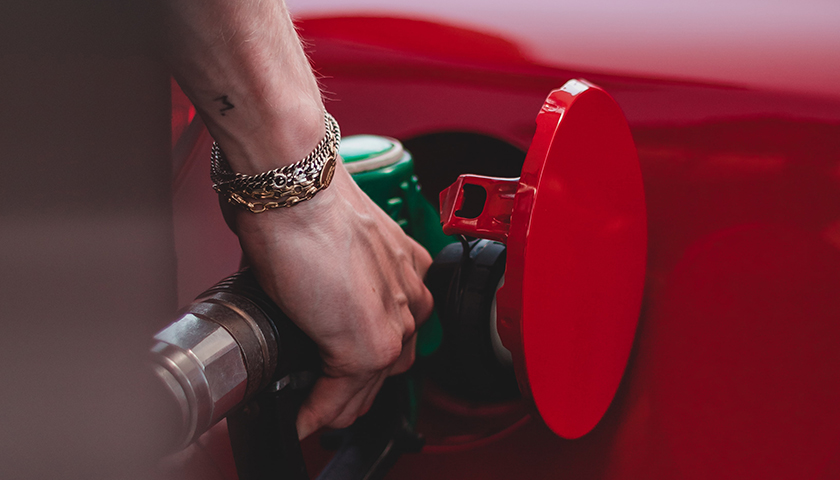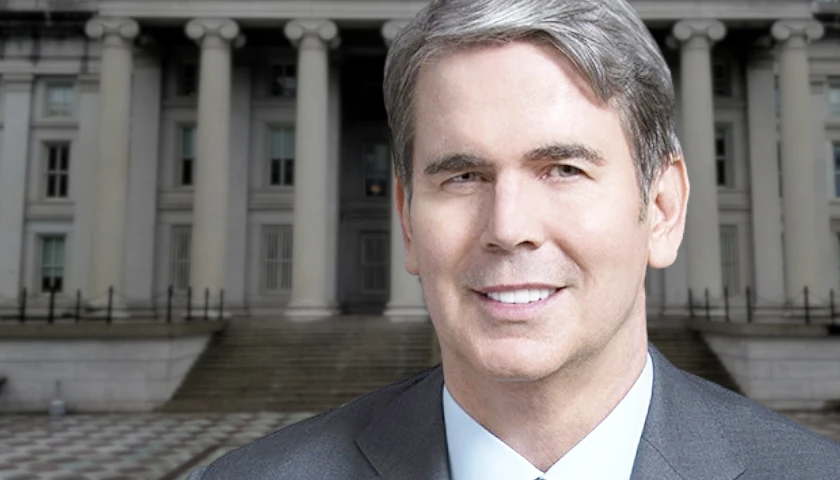by Thomas Catenacci
President Joe Biden and Democrats have blamed the continued gasoline price surge on Big Oil and Russia’s invasion, but pump prices have climbed throughout his tenure.
While Russia’s invasion of Ukraine has destabilized global energy markets, causing an historic supply crunch, high gasoline prices have been the norm throughout Biden’s first 14 months, federal data showed. Experts have blamed the high prices on the administration’s energy and climate policies disincentivizing domestic fossil fuel production.
Since Russia’s invasion, gasoline prices have increased more than 20%, from $3.53 per gallon to $4.24 per gallon, according to the Energy Information Administration. However, pump prices increased a whopping 48.4% between Biden’s January 2021 inauguration and Feb. 21, three days before Russian President Vladimir Putin ordered troops into Ukraine.
 Democrats and the White House initially blamed Russia for the entirety of the price increases, calling it “Putin’s gas price hike,” before also accusing oil companies of profiteering off the crisis.
Democrats and the White House initially blamed Russia for the entirety of the price increases, calling it “Putin’s gas price hike,” before also accusing oil companies of profiteering off the crisis.
“While there is no denying that Putin’s war has led to instability on global energy markets, I remain concerned that the oil industry is not doing enough to protect American consumers from rising gas prices,” House Natural Resources Committee Chairman Raúl Grijalva wrote to Big Oil executives on March 18.
However, fossil fuel industry groups and Republicans have slammed the Biden administration for its long string of policies dating back to the president’s first day in office. They accused Biden of waging a war on fossil fuels, causing decreased capital flows to domestic projects.
“The United States has shown its global energy dominance over the past decade,” Independent Petroleum Association of America COO Jeff Eshelman told the Daily Caller News Foundation in February. “Unfortunately, this has been threatened by the current Administration’s policies against domestic natural gas and oil production.”
“Make no mistake, natural gas and oil production here at home benefits not only our nation, but also our worldwide allies,” he added. “For America, it means less reliance on oil imports from unfriendly countries.”
Among Biden’s first actions as president was to revoke the Keystone XL pipeline’s federal permit, which would have transported more crude oil into the U.S. from Canada. The administration also abandoned the Willow Project, a significant oil and gas project in Alaska approved by the Trump administration that would have produced 100,000 barrels of oil per day.
After a federal judge ordered the Biden administration to halt its attempted ban on new federal land drilling leases, the Department of the Interior has dragged its feet and defied multiple court-ordered deadlines to restart the program. The Interior Department also chose not to appeal a recent ruling that prohibited an offshore drilling lease in the Gulf of Mexico the agency facilitated in the fall.
Further, the administration hasn’t developed a new five-year federal leasing program — which is needed to plan future lease sales — to replace the current one which expires in late June 2022, according to a Congressional Research Service report from December. The most recent offshore lease sale occurred in 2020 during the Trump administration.
Overall, there are just 601 oil and gas drilling rigs active in the U.S., the latest government data showed. The number of rigs peaked under the Trump administration in 2018 when there were 1,032 active.
The U.S. is also on track to again become a net importer of oil in 2022 after briefly reaching net exporter status in 2020. The U.S. became a net exporter of total energy in 2019, factoring in oil, coal and natural gas trade, for the first time in 75 years.
“We haven’t had a federal lease sale in North Dakota in over a year,” Republican North Dakota Rep. Kelly Armstrong, a member of the House Energy and Commerce Energy Subcommittee, told the DCNF in an interview. “These are real things — that you are sending signals, not just to energy companies, but also to Wall Street.”
“(Drilling projects) take several years to do and a ton of capital the raise,” he continued. “How are you going to do that when you have an administration basically signaling that they want nothing to do with oil and gas?”
North Dakota produced 1.1 million barrels of oil per day in 2021, the third-largest statewide output, according to federal data.
– – –
Thomas Catenacci is a reporter at Daily Caller News Foundation.




